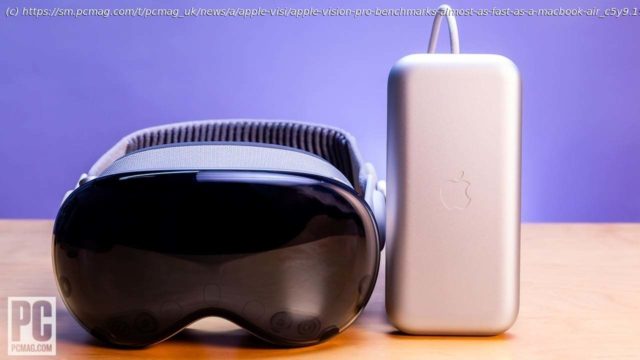According to our tests, Apple’s M2-powered Vision Pro headset is nearly as powerful as the iPad Pro and the MacBook Air.
Most VR headsets require a choice: Convenience or power. Standalone headsets like the Meta Quest 3 and the Meta Quest Pro are convenient because you can use them on their own with nothing attached. The trade-off is that they use mobile processors that aren’t as powerful as computers. Tethered headsets can harness the full power of a gaming PC (or in the case of the PlayStation VR2, a PlayStation 5), but they must be physically connected with a cable. Apple’s Vision Pro changes this dynamic.
The Vision Pro is powered by two chips: Apple’s M2 and R1. The M2 is the same System on a Chip (SoC) found in the current iPad Pro and the MacBook Air, as well as the 2022 MacBook Pro. Working alongside the M2 is Apple’s new R1 chip, a dedicated spatial computing processor for analyzing, displaying, and tracking your surroundings. This combo is far more potent than the Qualcomm Snapdragon XR2 Gen 2 in the Quest 3 and the Snapdragon XR2+ in the Quest Pro, both of which are mobile SoCs.
Just as important as the Vision Pro’s dual-chip design is its platform, visionOS. VisionOS is an operating system built on iOS, iPadOS, and macOS, and it can run many iPad apps. Because of this, we were able to install several of our standard benchmarking apps on the Vision Pro to evaluate its performance. Because of fundamental platform differences, we can’t quite compare it apples to apples with an iPhone, iPad, or MacBook, but our results offer a general picture of how the headset stands against different Apple products. Vision Pro Benchmark Scores
To evaluate its processor performance, we installed the iPad versions of 3DMark, Antutu, Geekbench 6, and GFXBench on the Vision Pro.






